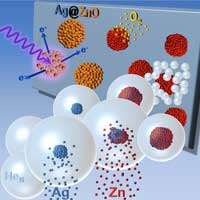 Core-shell clusters pave the way for new efficient nanomaterials that make catalysts, magnetic and laser sensors or measuring devices for detecting electromagnetic radiation more efficient.
Core-shell clusters pave the way for new efficient nanomaterials that make catalysts, magnetic and laser sensors or measuring devices for detecting electromagnetic radiation more efficient.
Thursday, July 30, 2020
Researchers synthesize nanoparticles tailored for special applications
 Core-shell clusters pave the way for new efficient nanomaterials that make catalysts, magnetic and laser sensors or measuring devices for detecting electromagnetic radiation more efficient.
Core-shell clusters pave the way for new efficient nanomaterials that make catalysts, magnetic and laser sensors or measuring devices for detecting electromagnetic radiation more efficient.
Machine learning model may perfect 3D nanoprinting
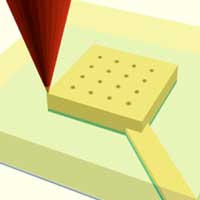 Two-photon lithography (TPL) has shown promise in research applications but has yet to achieve widespread industry acceptance due to limitations on large-scale part production and time-intensive setup. Scientists turned to machine learning to address two key barriers to industrialization of TPL.
Two-photon lithography (TPL) has shown promise in research applications but has yet to achieve widespread industry acceptance due to limitations on large-scale part production and time-intensive setup. Scientists turned to machine learning to address two key barriers to industrialization of TPL.
3D nanometer-thin membrane borrows from biology
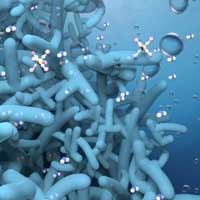 Mimicking the structure of the kidney, a team of scientists has created a three-dimensional nanometer (nm)-thin membrane that breaks the permeance-selectivity trade-off of artificial membranes.
Mimicking the structure of the kidney, a team of scientists has created a three-dimensional nanometer (nm)-thin membrane that breaks the permeance-selectivity trade-off of artificial membranes.
Incorporating ferromagnetism and superconductivity together in a single layer of molecular superlattice
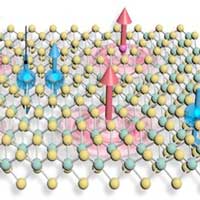 Scientists have demonstrated an interlayer-space confined chemical design method for the synthesis of single-atom doped tantalum disulfide (TaS2) molecular superlattice, where ferromagnetism was successfully introduced in the superconducting TaS2 layers.
Scientists have demonstrated an interlayer-space confined chemical design method for the synthesis of single-atom doped tantalum disulfide (TaS2) molecular superlattice, where ferromagnetism was successfully introduced in the superconducting TaS2 layers.
A crazier crazy straw for science
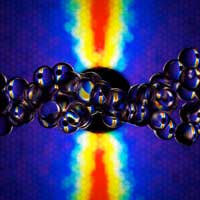 Curlicued research tool propels fast-moving fluids for study by neutrons.
Curlicued research tool propels fast-moving fluids for study by neutrons.
Researchers follow the charging and discharging of silicon electrodes live
 Scientists have now succeeded for the first time in observing the charging and discharging process directly on crystalline silicon electrodes in detail.
Scientists have now succeeded for the first time in observing the charging and discharging process directly on crystalline silicon electrodes in detail.
Researchers enhance electron spin longevity
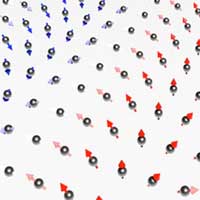 Researchers developed a way to extend and stabilize the lifetime of the electron's spin to more effectively carry information.
Researchers developed a way to extend and stabilize the lifetime of the electron's spin to more effectively carry information.
Subscribe to:
Comments (Atom)
